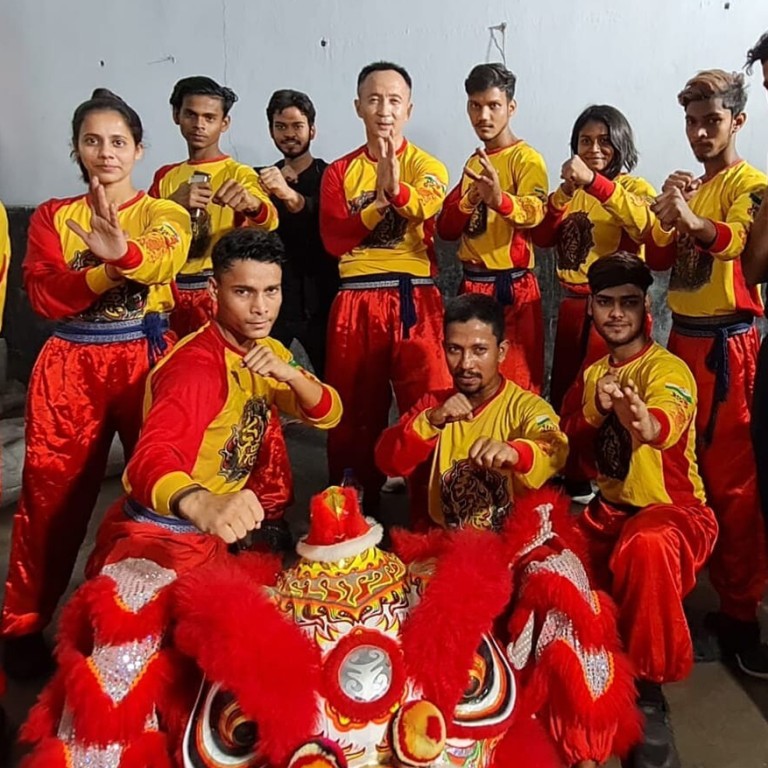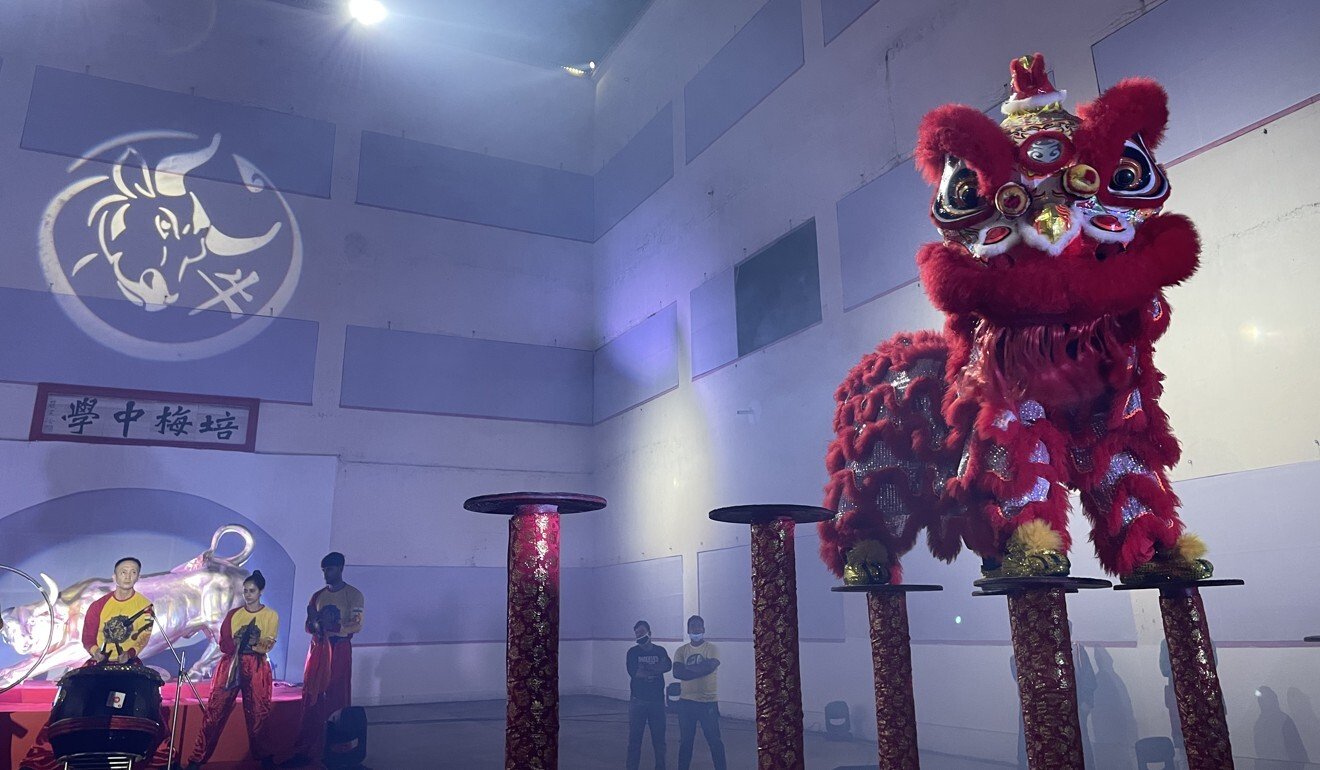
How an ethnic Chinese teacher piqued Indian students’ interest in lion dance and keeps it roaring
- As one of fewer than 4,000 Chinese-Indians thought to still live in India, James Liao has worked to preserve his community’s traditions over the past 20 years
- The Kolkata native learned his craft from a Malaysia-based lion dance master, and now looks to pass on the music, moves and ‘virtues’ to his Indian students
Onlookers whooped and cheered as they watched the colourful spectacle, but after the 20-minute show at the Pei Mei Chinese high school was over, the man behind it all did not look entirely satisfied.
“We made some mistakes. We would have lost points if this was a competition,” said James Liao, the show’s director.

Each year, Liao and his students perform a lion dance to bring the Lunar New Year celebrations in Tangra, one of Kolkata’s two Chinatowns, to a close. The festivities were somewhat subdued this year because of the coronavirus pandemic, but about 300 people still showed up – many of whom filmed the dance for family or friends who now live overseas.
Lunar New Year: the Chinese left ‘trapped and helpless’ overseas
As many as 50,000 ethnic Chinese once called India home before the Sino-Indian war of 1962. But in the decades since that brief conflict, the community has dwindled and Liao – who said he likes to think of lion dance as a sport rather than a cultural activity – now exclusively teaches Indian students, including two girls, who hail from as far afield as the states of West Bengal and Bihar.
Many of his students came to Liao after watching the videos he posts to YouTube, which show him practising martial arts such as wing chun and tai chi. He is keen to teach children self defence, having been bullied himself as a teenager at a local English-language school, but also offers them complementary lion dance lessons, complete with instructions in the art’s “eight virtues” – including loyalty, integrity, bravery, honesty and teamwork.

“I’ve been showing them how to follow these virtues as a guideline,” Liao said. “It’s not just about the show, the show will come and go, but their personalities have to be improved.”
Though Liao has long been a fan of lion dance – vividly remembering using a bucket as a makeshift lion’s head to imitate other dancers in his younger years – it was not until he came across the YouTube videos of Malaysia-based Xiao Feihong more than a decade ago that he really began to hone his skills.
Impressed by the quality of the choreography on display, Liao reached out to Xiao, who was so encouraged by the Kolkata native’s passion for lion dance that he agreed to take him on as an apprentice.
Over his two weeks of training, Liao learned all he could about the music, moves and “virtues” of lion dancing – taking the skills he picked up back to his home city.
Lions aren’t native to China, so where did the traditional lion dance come from?
Liao’s lion dance team are now regularly invited to perform at the opening of new Chinese restaurants in Kolkata and other major cities. They have also been asked, somewhat surprisingly, to take to the stage at several Indian weddings – though for these, Liao changes the performance slightly to have scrolls come out of the lion’s mouth reading bainian haohe (a traditional Chinese wedding greeting, wishing the couple a long and happy life).
Despite the fact that many of his students – the oldest of whom has been with him for more than six years now – first came to Liao out of a desire to learn martial arts, he said they soon developed a passion for lion dancing, too.
The two disciplines, he said, “are actually connected. All the footwork, moves and styles of lion dance are connected to martial arts.”
Liao’s wish is that his students now take what he has taught them, and carry on lion dancing for many years to come.
“It doesn’t matter if you are Indian or Chinese,” he said, anyone can lion dance “as long as you maintain the quality and virtues”.

